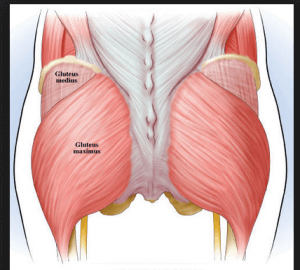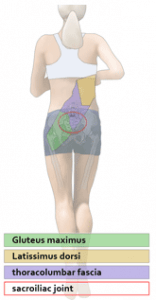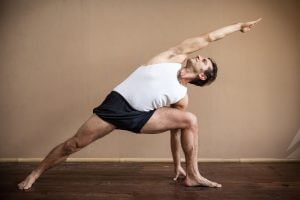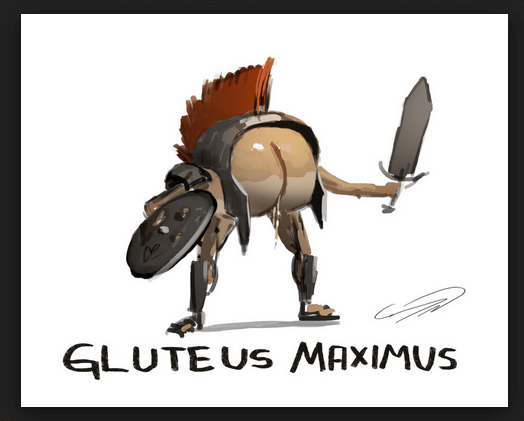The Gluteus Maximus is part of our core stabilizing system. It is supposed to be one of the strongest muscles in the body but due to our lifestyles and compensation patterns, this is often not the case. Weak glutes can lead to back, hip, knee, neck pain and more. Maintaining their functionality is of the utmost importance.
 The gluteus maximus originates from the upper posterior ilium and the posterior inferior surface of the sacrum and coccyx. Covering the entire region of the buttocks, it passes over the greater trochanter of the hip and attaches to the gluteal tuberosity and iliotibial band on the side of the thigh (femur). For anyone who has ever had lateral knee pain or iliotibial band syndrome, weak glutes can very often be the culprit.
The gluteus maximus originates from the upper posterior ilium and the posterior inferior surface of the sacrum and coccyx. Covering the entire region of the buttocks, it passes over the greater trochanter of the hip and attaches to the gluteal tuberosity and iliotibial band on the side of the thigh (femur). For anyone who has ever had lateral knee pain or iliotibial band syndrome, weak glutes can very often be the culprit.
 The Glute Max is also part of what is known as the posterior oblique sling. This means that it shares a fascia with the thoracolumbar aponeurosis and the contralateral latissimus dorsi. It also means that your right shoulder problem could easily be coming from your left hip…..and vice versa.
The Glute Max is also part of what is known as the posterior oblique sling. This means that it shares a fascia with the thoracolumbar aponeurosis and the contralateral latissimus dorsi. It also means that your right shoulder problem could easily be coming from your left hip…..and vice versa.
Whats even more fascinating is that the glute max and the pelvic floor are related due to a) the max’s attachment on the coccyx and b) both muscle groups connect to the sacrotuberous ligament via connective tissue. Their relationship is a tricky one, though, often dysfunctional in nature.
The pelvic floor, despite common belief, tends to overwork in many situations. For example, it does not have to grip when the glute engages, but it often does. In NeuroKinetic Therapy ® (NKT), we call this relational compensation. Its a situation where one muscle acts to facilitate and activate another muscle that is not functioning properly. Eventually, and especially if we are athletic or mobile, it leads to pain or injury.
To check and see if this is you, stand with you feet hip width apart and take a forward bend. Place your finger tips on the floor and bend your knees about 8-12 inches (even if you don’t have to to touch the floor). Grip your right buttock. Did the pelvic floor engage? Grip your left buttock. Grip both. You can work with this glute/pelvic floor connection in this pose by gripping the glutes and then consciously relaxing the pelvic floor at the same time.
 The importance of having a centrated hip joint can also not be overstated. If the hip is out of place, the glutes and other muscles around it can not function properly. The hamstrings will dominate the glutes, the iliacus will overpower the psoas, the adductors will work too hard and mess up the obliques. There are countless possibilities. Especially in today’s world, with over 300,000 hip replacements done each year in the US, keeping a healthy hip joint and maintaining functional glutes can save you a lot of agony.
The importance of having a centrated hip joint can also not be overstated. If the hip is out of place, the glutes and other muscles around it can not function properly. The hamstrings will dominate the glutes, the iliacus will overpower the psoas, the adductors will work too hard and mess up the obliques. There are countless possibilities. Especially in today’s world, with over 300,000 hip replacements done each year in the US, keeping a healthy hip joint and maintaining functional glutes can save you a lot of agony.
Take time to take care of yourself. The older we get, the more effort we need to put into our bodies to live pain free. Both Yoga and NeuroKinetic Therapy are powerful tools that grant us this capability. If you feel like you have weak glutes, low back pain, trouble with your hip joints, etc, seek someone out. With the proper guidance, the body can heal.

